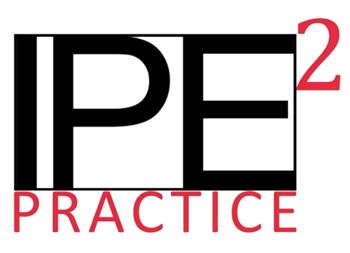
The focus on interprofessional education has been a foundational part of UTMB’s Academic Enterprise since it was introduced at the institution in 2008.
Interprofessional education—or IPE as it’s commonly called—was introduced as part of Synergy, UTMB’s quality enhancement plan that led to a successful 10-year re-accreditation by the Southern Association of Colleges and Schools Commission on Colleges (SACSCOC) in 2008.
The next iteration of UTMB’s QEP—which was due this month in advance of the SACSCOC planned visit in February—also focuses on a team-based approach to education.
IPE2Practice, as the new QEP is called, is all about taking UTMB interprofessional education to the next level, said Shelley Smith, director of Interprofessional Education and the QEP.
“The exponent 2 in IPE2Practice is important because it stands for us taking this to the second level and building on the foundation that was successfully set with Synergy, which formally brought IPE to UTMB,” Smith said. “Our focus with this iteration is to be more practice-based, where we take interprofessional education from the classroom to practice.”
Smith said that when students from two or more professions actively learn about, with and from each other, they are practicing interprofessional education.
Dr. John C. McKee, associate vice president for Institutional Effectiveness, said that IPE2Practice supports UTMB’s mission and vision as institution.
“This focus prepares practitioners for the future of health care in a teambased approached,” he said. “With IPE, we’re bringing together students from different disciplines so each understands what the other does. With IPE2Practice, we’re taking that a step further by ensuring that such understanding is being implemented in their education.”
The latest QEP is one element of the required re-accreditation package that is being readied for SACSCOC, the regional accrediting body that ensures colleges in the Southern states—including Texas—are meeting necessary educational standards. McKee said that as part of the standard re-accreditation process UTMB was also required to submit a compliance certificate in September.
SACSCOC representatives will visit UTMB Feb. 6-8 to discuss the institution’s compliance and the QEP and to meet with university executives.
The accreditation is significant because without it, UTMB is not allowed to confer degrees to students. The accreditation period will begin in 2018 and run through 2027 with a fifth-year interim report regarding UTMB’s initiatives to implement IPE2Practice due in 2023.
While UTMB could have focused on other initiatives for its QEP, Smith said continuing the emphasis on interprofessional education seemed the logical choice.
“It made sense to remain focused on IPE because it’s already here,” Smith said. “Of course, we’ve identified some gaps—particularly with implementing it into practice—so that’s what we’re addressing this time around.
“In addition, the new Health Education Center under construction is all about interprofessional education. That new building is about teams and teamwork, communication, working together and learning together. It’s an outward sign of an inward motion we’re making at UTMB.”
What can employees do to prepare for the February SACSCOC visit?
“Everyone at UTMB needs to know that interprofessional education is working and that we’re going to take it to the next level now,” Smith said. “Our students continue to say that they want to learn how to work in teams and we are going to provide them that opportunity.”